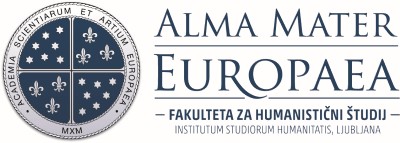
Publication of the book 'The Anthropology of Smell'
The term ÔÇťolfactory heritageÔÇŁ refers to smells that are important to a community because they are associated with important people, places, customs, habits, beliefs, prejudices, things, traditions, and sensory ÔÇťtrainingÔÇŁ. Therefore, olfactory heritage can be considered a significant legacy for the next generation.
Research in olfactory heritage involves many disciplines, such as medicine ÔÇô neuroscience, chemistry, anthropology, archaeology, conservation science, philosophy, psychology and history. Studies have been conducted in several manners, but the prevailing literature on the subject focuses either on linguistic-semiotic analyses of olfactory notions, which essentialize smell as a universal language, or on anthropological comparisons of olfactory meaning, which emphasize commonalities and differences between cultures. Due to the intangible and ephemeral nature of smells, one of the main challenges of olfactory heritage science is developing methodologies for documenting and archiving the smells for the future.
Anthropological and related research on smell was elevated from academic to normative level at the end of the 20th century with the first documents on the protection of olfactory heritage. Among these documents, the 1999 Burra Charter is particularly important. It was the first document to give smell a place in cultural heritage and was prepared by AustraliaÔÇÖs ICOMOS (International Council on Monuments and Sites). In the introduction to the charter, it defines what the concept of cultural significance means and how smell is included in this concept. However, until 2021 and the adoption of the French Sensory Heritage Law (Loi no. 2021-85), the recognition of smells as cultural heritage was neither widespread nor universal. Before then, smell was only indirectly recognized as part of cultural heritage in the 2003 UNESCO Convention for the Safeguarding of the Intangible Cultural Heritage. Although UNESCO does not directly recognize smell as intangible cultural heritage in the definition of intangible cultural heritage, food and culinary practices, folk medicine, religious rituals, ritual purification, etc. are included indirectly. In 2017, UNESCO was considering the application to have the skills, knowledge and practices associated with perfume making in the region of Grasse (France) recognized as intangible heritage. Given that there is no mention of smells among the elements inscribed on the organizationÔÇÖs list, the recognition of the olfactory heritage of Grasse created an important precedent.
Museums are essential institutions for the presentation of olfactory heritage. Museums can use smell to encourage visitors to consider the past as a fragrant place and engage with the world of the Other, explore the connections between smell and other senses, elevate smell to art, give exhibitions a more realistic feel, and boost visitor numbers.
Slovenian museums, for example, display a variety of olfactory heritage elements and are aware of the role smell plays in attracting visitors. Although there are no official museum strategies for olfactory heritage, many museums in Slovenia have been explaining smell on their own initiative since 1992 and as part of exhibitions or educational programs.
The book on the anthropology of smell, published by AMEU-ISH, Ljubljana Slovenia, contains a selection of fundamental discoveries about olfactory heritage and the olfactory imagination. It leads the reader from basic explanations of the anthropology of the senses and the anthropology of smell, to olfactory heritage, to major works in the field, to methodological features of olfactory research, to the concept of smell as articulated in language, to a broad spectrum of olfactory notions and roles in the histories of medicine, philosophy and religion, to a description of the dominance and categorization of social groups based on their smell, to the appearance of the nose and its associations, to the cultivation of the sense of smell in literary works, to the importance of corporate scents and the manipulation of scents to influence buying habits, and finally, to the applied use of olfactory science in museums. The list of topics explored in the anthropology of smell could, in fact, be endless, since there is no activity that does not involve breathing and therefore smelling.
Prof. Dr. Mojca Ramšak, Ljubljana, Slovenia, PhD in Ethnology from the University of Ljubljana
Text as provided by the organiser(s).